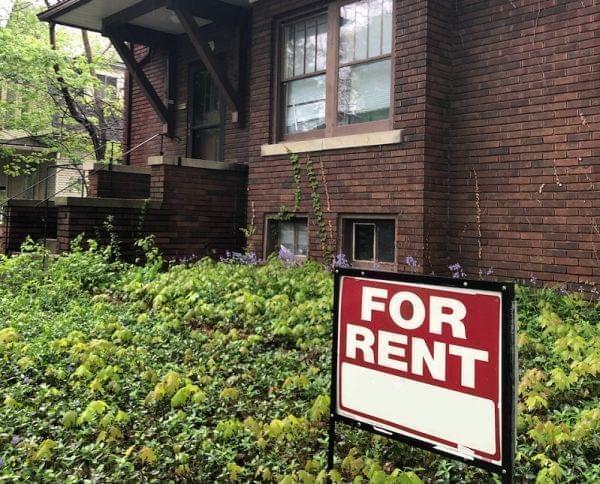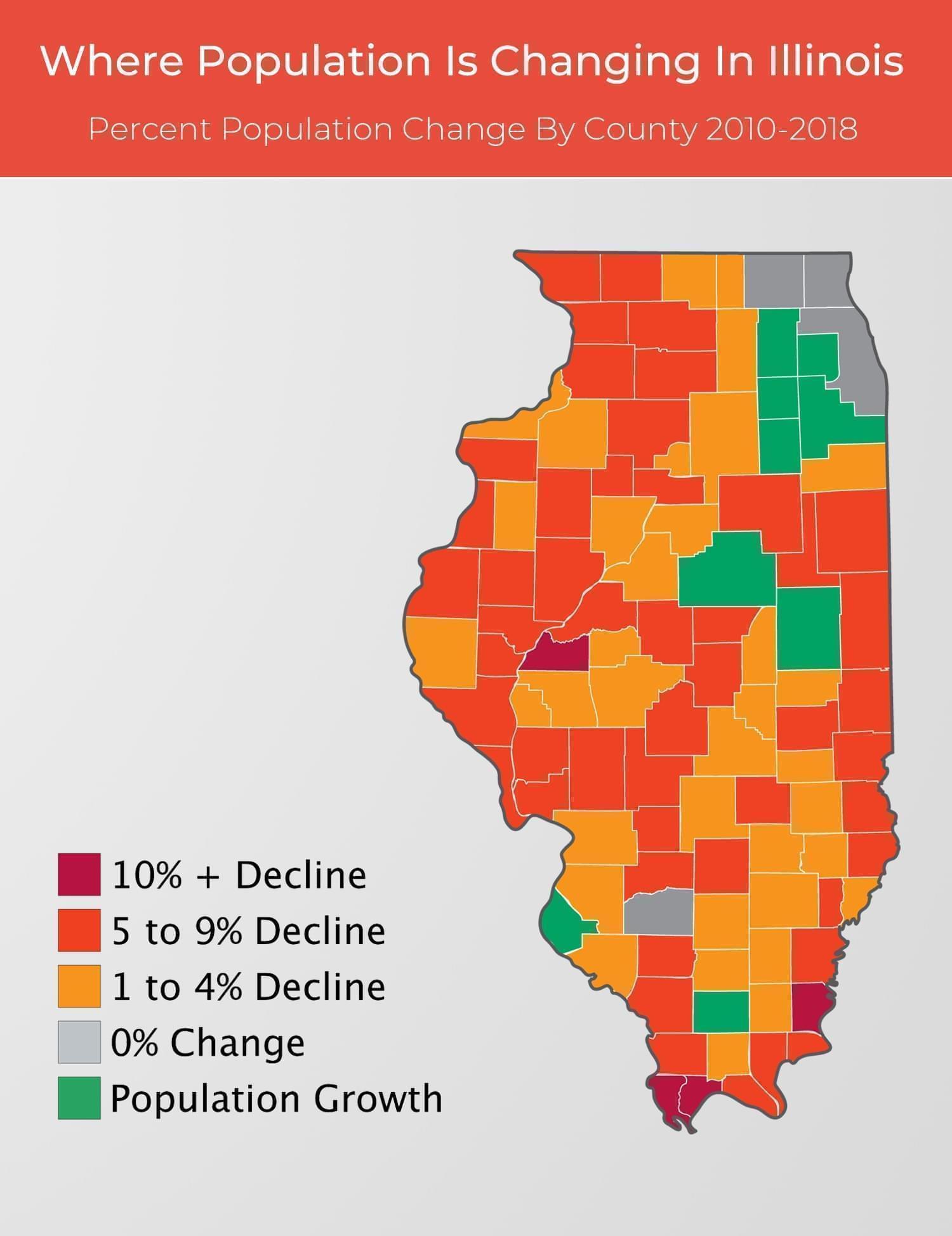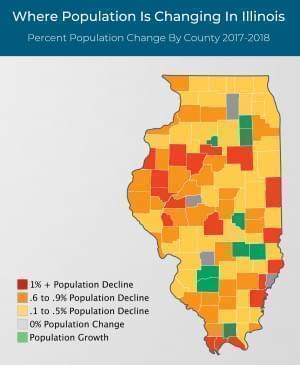Better Jobs in Small Cities, More Investment In Higher Ed Could Stem Illinois’ Population Loss

House for rent in Urbana. Kristin Walters/Illinois Newsroom
Illinois continues to lose residents, according to estimates from the U.S. Census Bureau released in April. Overall, around 45,000 fewer people lived in the state in 2018 than 2017, a loss of about 0.4%.
About half of that decline is in the Chicago metropolitan region, particularly in Cook County, which saw a 0.5% decrease. The recent numbers show growth in the Chicago region has slowed, but long-term trends find that downstate is shrinking at a much faster and sustained pace.
“If we take that longer view, we’re actually seeing population growth centered up around Chicago,” said Cynthia Buckley, a professor of sociology and social demographer at the University of Illinois Urbana-Champaign.

Source: U.S. Census Bureau
All but nine of Illinois’ 102 counties lost population since the last census count in 2010, and they’re clustered in the northeastern part of the state, with a few dotted in the middle, like McLean and Champaign counties, as well as Monroe County in the Metro East.
That means the tax base in much of the state is eroding and there could eventually be less money to pay for everything from roads to schools.
As the next decennial census approaches in 2020, demographers say it’s crucial, particularly for counties outside of the Chicago region, to get an accurate count.
Illinois could lose one or even two congressional seats, affecting not only representation but also federal funding.
Where to and what to do?
Buckley said most people who are leaving move south and west, following national trends that see cities like Phoenix and Dallas growing, while midwestern states shrink.
Chicago is still a draw for young people, Buckley said, and policymakers should focus on stemming the flow of people from rural and urban areas outside of the city.
“Chicago is major pull,” she said. “That’s great but it’s not enough to just have Chicago. We’ve got to be developing other urban opportunities.”
That could be in smaller cities, like the Quad Cities or Peoria, where the cost of living is cheaper.
She points to New York, which had a similar challenge with New York City. She said the state invested in transit to make travel between smaller cities, like Albany, and New York City easier.
“Good roads, good train connections, good, cheap commuter air – that helps diversify opportunities to some smaller communities,” she said.
Tax incentives to help diversify economies could help, too, to encourage light industry or other sectors to grow and diversify the economy, which Buckley said could help guard against population loss.

Source: U.S. Census Bureau
But Christopher Merrett, director of the Illinois Institute for Rural Affairs at Western Illinois University, offered a different approach. He stressed focusing on keeping young people here for college.
“We need to strengthen and reinvigorate people's sense that higher education in Illinois is high value,” he said.
The data may back that up. The Illinois State Board of Higher Education found that around 19,000 more students left the state to go to college than migrated here to attend in 2016. And nearly half of students going to a four-year college after high school left the state in 2017.
The counties seeing growth in central Illinois - McLean and Champaign - also have two large university campuses, the flagship University of Illinois Urbana-Champaign and Illinois State University in McLean.
Merrett also attributes that population drop partly to the mechanization of agriculture, which means it takes fewer people to farm the land.
“There are counties in the state of Illinois whose population peaked literally a century ago,” he said. Disinvestment in government sector jobs, intensified by the two years Illinois went without a state budget, also may have contributed.
Correction: Monroe County outside of St. Louis showed growth since 2010. A previous, incorrect version stated Madison County grew.

Links
- What’s Really Behind Illinois’ Population Loss?
- Champaign County Population Growing
- By The Numbers: What The USDA’s Latest Census Tells Us About American Agriculture
- Illinois Proposal Targets Hard-To-Reach Communities For 2020 Census
- 2020 Census Impact on IL; 23,000 Duplicate Vehicle Tickets Dismissed; Central Illinois Tornadoes
- The 2020 Citizenship Census Question; Toys ‘R’ Us Closures; Virgil Abloh; Zoo Inclusion Initiatives
